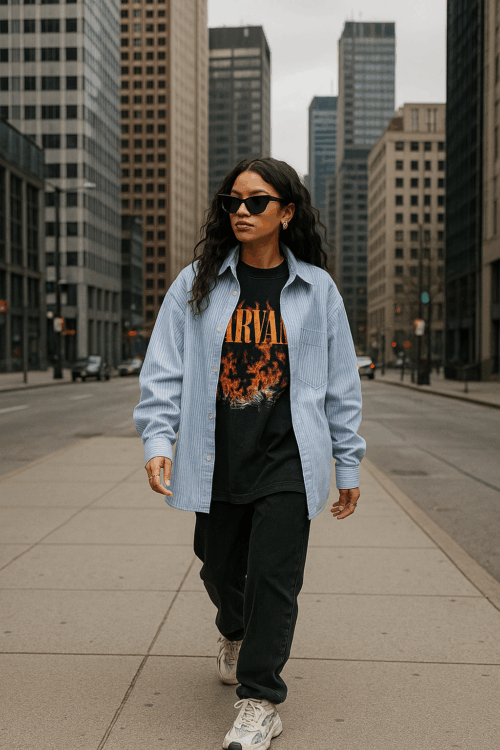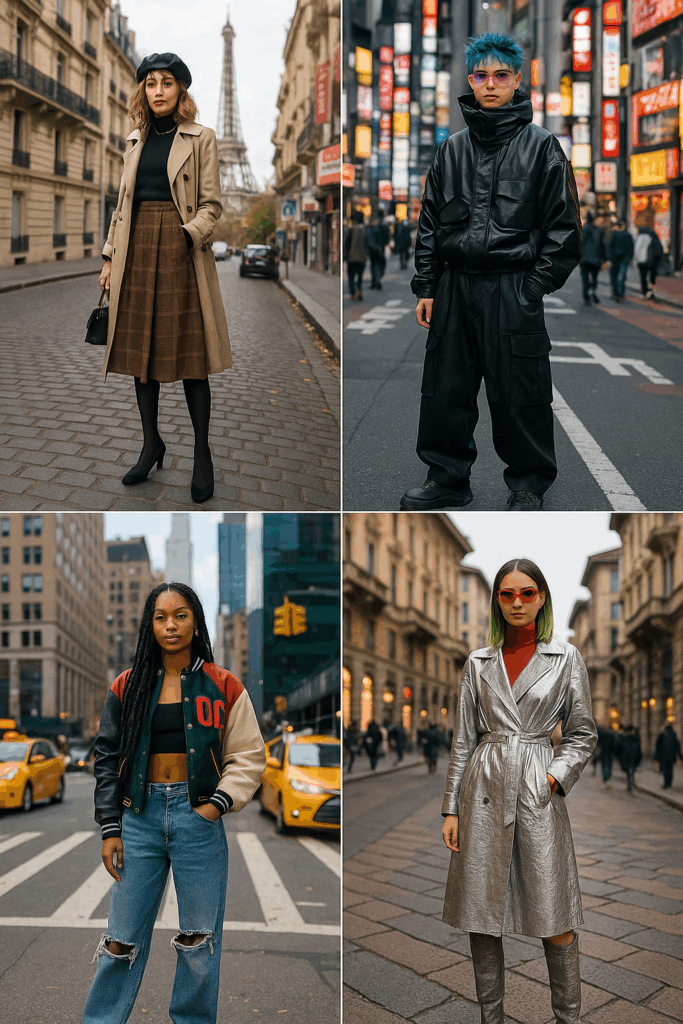
From Sidewalk to Catwalk: Street Style Ascension
Fashion has never been a mutually dependent trade between the masses and the designers. Through the ages, trends have migrated from rich people’s runways to retail racks, the masses’ actions being guided by luxury fashion houses. However, over the last decade, something shifted culturally — street style emerged as a force, guiding the very trends once solely dictated by catwalks. And now, urban streets are as powerful as Paris or Milan catwalks in determining what is cool.
The Power of Real-Life Fashion
Street style isn’t created for the camera — it’s genuine, emotive, and based on reality. Influencers, designers, and women everywhere are taking from within, combining high-fashion items with second-hand finds or essential basics. This combination of accessibility and authenticity is the reason street style is so democratic — it’s fashion in practice, rather than fashion in place.

Social Media: The Great Equalizer
Social media platforms such as Instagram, TikTok, and Pinterest have made the streets virtual catwalks. A daring ensemble photographed at the subway station or coffee shop can become viral overnight and inspire thousands of people globally. Fashion influencers and bloggers are just as powerful as their conventional counterparts, with most working directly with designers to develop capsule collections from their personal wardrobes.
High Fashion Borrowing From the Streets
High fashion brands noticed the cultural appeal of streetwear. Louis Vuitton, Balenciaga, and Gucci, just to name a few, have incorporated hoodies, sneakers, oversized cuts, and graphic logos into their lines — clothing that is deemed far too casual for the fashion runway. The meeting of high-end luxury cut with street-fashion aesthetics has been blamed for ushering in a new breed of fashion: high-street couture.
Street Style as Cultural Archive
What’s special about street style is that it’s a reflection of the political and social mood of the times. From protest fashion to gender-nonconformist dressing, it taps into the atmosphere, values, and identities of an era. Just like punk fashion did during the ’70s, street style now frequently has something to say on sustainability, diversity, and cultural pride.
Why the Sidewalk Leads the Catwalk Now
In the era of speedy digital, trends break and spread like wildfire quicker than traditional fashion timetables can keep pace. Designers increasingly look to the street as inspiration because that’s where in-the-moment creativity is unfolding. Street style is not seasonal — it’s present tense. And that in-the-present-tense quality makes it superior to the sometimes months-ahead-of-time runway presentations.

The Future of Fashion’s Flow
As consumers and designers become more and more indistinguishable, street style will become increasingly influential. The catwalk will continue to inspire, but it will no longer rule — it will coexist with the sidewalk. In this fashion future, anyone who has a vision and an audience will be able to dictate trends.
From massive blazers and runners to designer handbags and retro denim, the fashion future is a dialogue between the catwalk and everyday life, and the street is screaming louder than ever before.
Recommend0 recommendationsPublished in apparel, celebrity fashion, Hairstyles, Jewelry, Makeup, Our Fashion Passion



